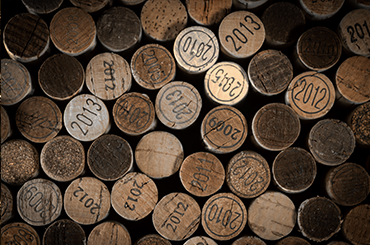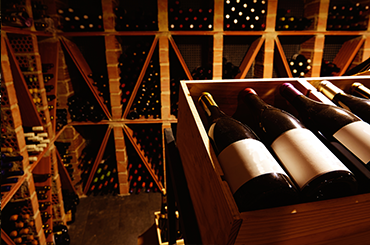Wine investment is a funny beast, as it tends to inflame passions. It can make your ears prick up at the thought of diversifying your current investment portfolio with a sneaky few glasses of top-shelf wine along the way. Or if you are a purist, the very thought that wine can be considered in such a way may repulse you. A middle ground no doubt exists – purchasing wines with the aim of selling a percentage of the bottles to fund your hobby – and this probably sums up my attitude. But whatever the path, the best piece of advice is simple: research is the key to success.
Invest in Wine
Despite the fads and fashions of the wine industry, certain wines have historically fared better than others in investment terms. First released in 1991, Langton’s Classification of Australian Wine has become the benchmark for investment in Australian wine. It ranks this country’s best-performing wines, based on market demand and secondary (or auction) market performance over time.
Wines in this classification are ranked in four categories depending on their secondary market performance: Exceptional, Outstanding, Excellent and Distinguished. In the Exceptional category, you will find the blue-chip Australian wines that need no introduction, ranging from the iconic Penfolds Grange and Henschke Hill of Grace to long-time solid performers, such as Rockford’s Basket Press Shiraz, Brokenwood Graveyard and Wendouree Shiraz.
As is expected, certain wines have dropped off this classification over the years, but the top performers have pedigree and with research (there’s that word again) into vintage conditions and cellaring potential, there can be returns to be made from the blue-chip wines.
Andrew Caillard MW from Langton’s Wine Auctions is vocal in his support of the blue-chip performers.

The ultra-fine Australian wine market is going through a state of change, but never underestimate Grange or Hill of Grace. Penfolds drives the secondary market in Australia.
How to invest in wines
It should be noted that most wines will decrease in value over time and even some of the best performers on the Langton’s classication may go down in value over time.
From where I’m sitting, there even seems to be a bit of a softening of Grange prices in recent years, though rarity and scarcity can always drive up the hammer price for the wines at any time. There used to be value in the perceived “off vintages”. Years such as ’91, ’97 and ’99 used to be great value, in the past showing a large gap between price realisations against the more hyped ’90, ’96, and ’98 vintages. The gap has closed in recent years, but it is still worth keeping an eye on it.
Blue-chip wines carry over to other wine-producing countries too, with the top wines from Bordeaux, Burgundy, Italy, Germany and Spain all capable of performing well. It is a market that is constantly in a state of flux though, with wines gaining favour and falling out of fashion quickly. Meanwhile, the same tried-and-tested performers just keep on plugging along.
While much has been said of Bordeaux’s varied pricing structure and its annual en primeur releases – when a wine is bought pre-release, while it is still in barrel – in recent times, the prices paid for Bordeaux wines has continues to perform well. “Never underestimate Bordeaux, and for that matter, do not underestimate the importance of Australian cabernet sauvignon,” Andrew says. “We may well see increased demand from China for our cabernet-based wines in the next few years.”
If past performance is anything to go by, wine investment schemes should be avoided like the plague. The collapse of Sydney-based Heritage Fine Wines in 2005 had serious ramifications for wine investment in Australia and sent ripples through the secondary market for years after. In the UK, wine investment schemes such as Boington & Fredericks, The Wine Index and Wine Traders International have failed with such regularity and devastation there are whispers that the UK government will appoint a regulatory body to keep them in line. Unlike many other investment opportunities, you needn’t go through a broker to invest in wine and in reality it’s probably advisable that you don’t.
In Australia, there are several places you can seek advice. Reputable auction houses such as Langton’s, Stirling, Oddbins, Wickmans and Grays Online provide plenty of information on their websites regarding price realisations and past auction history for wines that may be of interest. Websites such as liv-ex.com and the ifwic.org track auction prices of the world’s most sought-after wines, and wine forums can be a great source of information as long as you back up with further detective work of your own.
Lynton Barber from Stirling Wine Auctions sums up wine investment well. “You won’t make the money you should, considering the energy you put into it,” he says. When you take into account the other inputs such as cellaring over time, insurance and auction commissions, Lynton definitely has a point. But do your homework and set realistic goals, and you may be able to fund a trip to a wine region or buy a case or two of fine wine.
EXPERTS’S TOP SUGGESTIONS FOR WINE INVESTMENT
We asked Andrew Caillard from Langton’s Wine Auctions, Lynton Barber from Sterling Wine Auctions and Graham Wright from Oddbins Wine Auctions, who shared the following advice.
1. Invest in pedigree – wines with a solid track record on the secondary market, the Australian blue-chip wines, top Bordeaux and Burgundy.
2. Know your vintages. For example, 1996 plus Rockford Basket Press equals a win.
3. Birth-year wines are good trading. Keep an eye on the prices of 1973 Grange this year for an indication, and think 1964s and 1974s for those milestone birthdays next year.
4. Capitalise on the scarcity factor. Wines such as Wynns from the 1960s are performing well.
5. The top Aussie fortifieds are making a bit of a comeback – think the great Hardy’s, Reynella, Seppelt and Penfolds releases, but avoid the commemorative ports.
6. Buyers will always pay more for provenance. No ullage, clean labels, no scuffed capsules, the wine’s cellaring history. Look after the wines you intend to sell well and cellar them in appropriate temperature- and light-stable conditions.
7. The new Langton’s Classification of Australian Wine is out now. Use it as a guide to market sentiment. This classification has been moved forward a year due to the fast-moving pace of the secondary market.
8. Invest in red wines, drink the white wines.
9. Only invest what you are prepared to lose – or drink, as the case may be. And take into account added costs such as insurance and cellarage.
10. Do your research.







